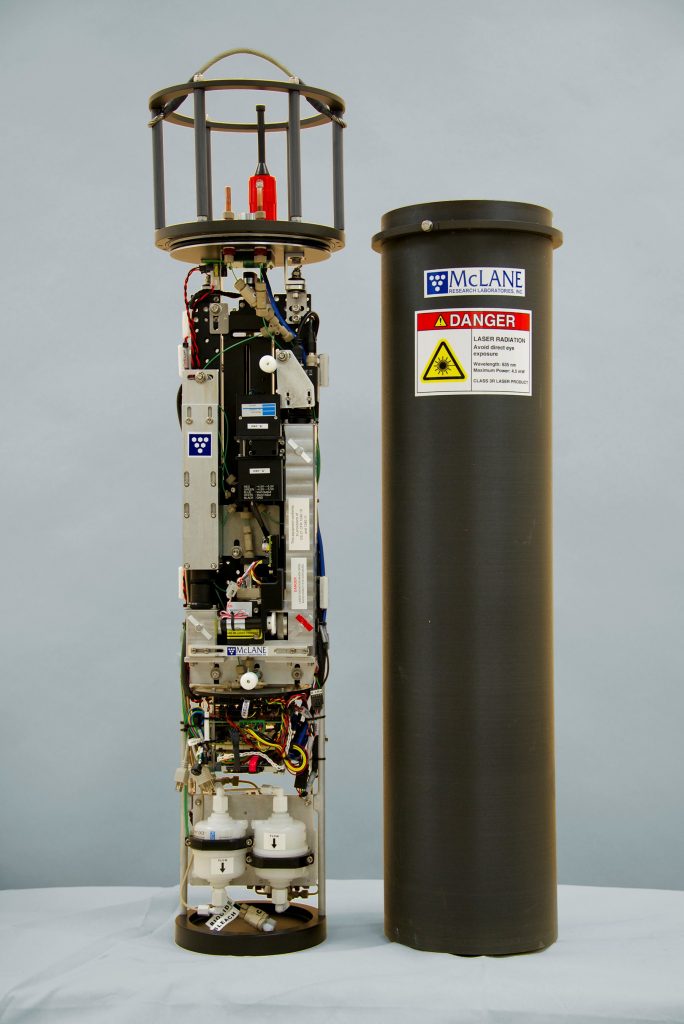A new equipment grant will allow University of Alabama researchers at the Dauphin Island Sea Lab to improve their ability to forecast harmful algal blooms in Mobile Bay.
The Gulf Coast Ocean Observing System has awarded $457,000 to Dr. Kenneth Hoadley for the purchase and maintenance of two Imaging FlowCytobots, or IFCBs, and for personnel.
“The funding will improve our ability to monitor and predict harmful algal blooms, which are a problem for fisheries, aquaculture and tourism activities along our coastline,” said Hoadley, an assistant professor in UA’s Department of Biological Sciences.

The IFCBs are cylindrical submersibles that sip up small volumes of water and take thousands of images per hour of microscopic algae and zooplankton in the water column. Using image recognition software, different species can be identified, sorted and logged into a database for tracking changes in microbial community composition. Hoadley said this is a great advantage over using traditional lab microscopes and allows higher-throughput monitoring in real-time.
The two IFCBs will rotate between Mobile Bay and Hoadley’s lab. While out in the water, the IFCB will be anchored to buoys in conjunction with other instruments, which are part of Alabama’s Real-Time Coastal Observing System, or ARCOS. Currently, ARCOS does not have the capability to instantaneously analyze algal communities as they change.
“We can take advantage of the network of sensors that already exists in order to better understand what we are seeing at the biological level with the IFCB,” said Hoadley. “Along with the ARCOS network, these new instruments represent a huge opportunity to link biogeochemical signals with biological response.”
Harmful algal blooms can kill marine life and create respiratory problems for humans. The data collected by the IFCBs can ultimately be used to create an alert system for stakeholders around Mobile Bay.
“We can make that information available to oyster aquaculture facilities, and they can know to raise their platforms out of the water temporarily during HAB events,” Hoadley said. “That same sort of information can potentially be utilized for the tourism industry, for certain beach closures and for safety.”
Moving the IFCBs around the bay could also be useful in identifying areas where researchers are seeing unique phytoplankton compositions that might be indicative of upcoming problems.
“Dr. Hoadley is trying to enhance our observing capabilities on the coast of Alabama and focus on an issue that has great societal impact,” said Dr. Behzad Mortazavi, professor and chair of UA’s Department of Biological Sciences. “The goal is to develop an understanding of what leads to the development of harmful algal blooms and if there are potential mitigation options down the road.”
The grant from GCOOS will provide support for a graduate student for three years, and both the instruments and funding will help train students in this field of research.
“It’s certainly a great opportunity to make Mobile Bay a sort of test bed for looking at harmful algal blooms,” Hoadley said. “This is a huge opportunity, and I feel like a lottery winner for this particular grant.”